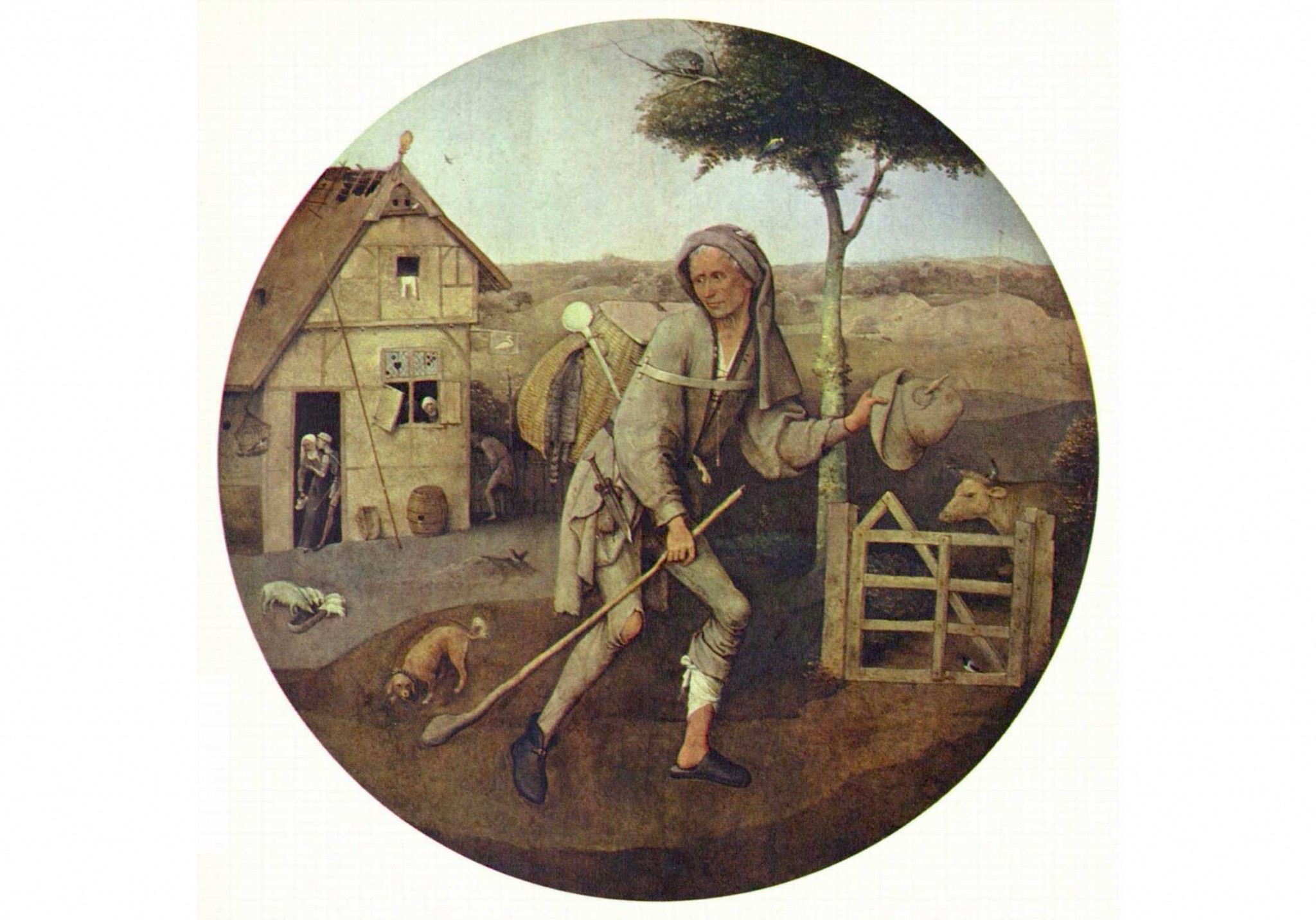
Hannema 1931a
“Aanwinsten” (D. Hannema) 1931
[in: Jaarverslag Museum Boymans, Rotterdam, 1931, pp. 2-5]
[Also mentioned in Gibson 1983: 121 (E279)]
In 1930 the Pedlar tondo is put up for auction in Berlin. One year later the panel is bought by the Boymans Museum (Rotterdam). In the museum’s annual report the new acquisition is signalled by director Dirk Hannema. He agrees with the Prodigal Son interpretation (defended by Glück, among others) because of the details that are said to refer to the biblical story (the brothel, the pigs at the trough), and he adds another argument: to the right, behind the gate, we see the calf that is going to be slaughtered when the Prodigal Son returns home: it is lying down and is quietly ruminating. Nevertheless, this animal is definitely not a calf but an adult bovine animal (cow, bull or ox).
Hannema not only considers the panel a faithful representation of the parable, but at the same time a genre painting with a moralizing message. Bosch painted the Prodigal Son ‘as the reflection of a figure that he could observe in his environment every day: a pedlar’. This remark makes Hannema the first Bosch author to signal that the tondo’s protagonist is actually a pedlar, but his text does not go beyond a sheer registration of this fact. Something new is also Hannema’s careful suggestion that Bosch’s Prodigal Son shows the same features as the supposed self-portrait in the Recueil d’Arras. Although the tondo’s protagonist looks younger the shape of his nose and mouth and the muscular neck return in the ageing man of the Recueil. On the same page and in spite of this Hannema supposes that Bosch painted the tondo ‘circa 1510’ (Bosch died in 1516…).
[explicit]